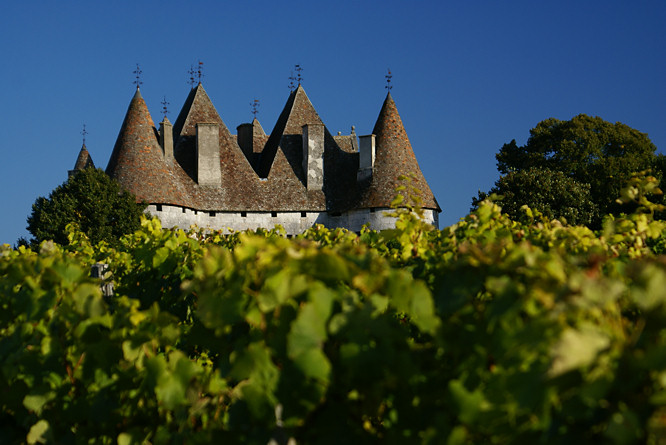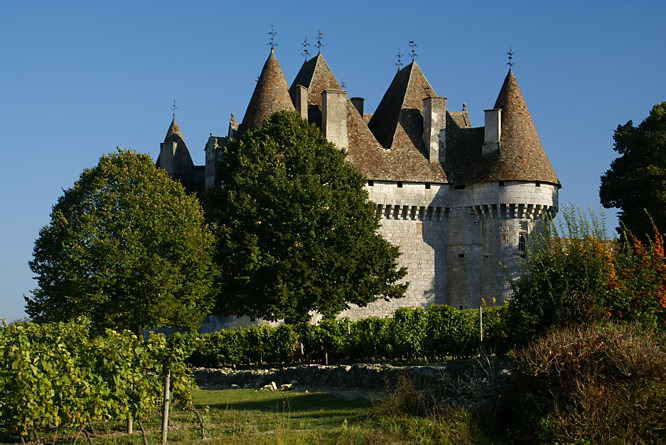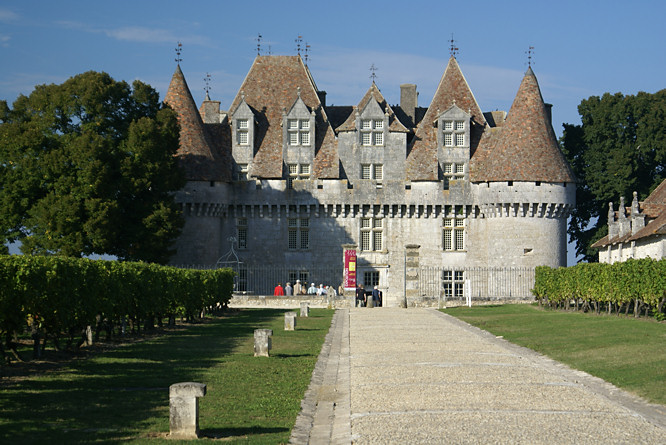Chateau de Monbazillac vineyard
The attractive Chateau de Monbazillac was built in the mid-sixteenth century on top of a hill south of Bergerac, is an architectural blend of medieval defensive fortifications and Renaissance exuberance. It is set in the heart of the prestigious Monbazillac vineyard owned by the Monbazillac Cellars Company.

The Chateau de Monbazillac is surrounded by an immense sea of grapes on the vine and has a magnificent panoramic view of Bergerac down in the valley. The castle Château de Monbazillac is open all year round to visitors except Mondays from 1st November to 31st March. It closes for lunch between 12 noon and 2pm
The vaulted cellars and alcoves, the first floor bedrooms and nearly twenty furnished rooms are open to the public. Also included in the entrance price are exhibitions of vine and wine; of local, Périgourdin furniture; of the history of Protestantism and of Périgord’s one thousand and one chateaux.
After visiting the Chateau each visitor is offered a complementary tasting of Monbazillac wine in the visitors centre. If you like what is on offer you can buy as much wine as you like.

Bergerac wine region semi-sweet and sweet late harvest dessert wines
The term 'vin blanc moelleux' is used to describe a sweeter white wine that is made from grapes harvested later than usual, but not so late as to be subject to the 'noble rot' applicable to the true dessert wines – known as 'vins liquoreux'.
The semi-sweet wines 'vins blancs moelleux' are given the generic appellation controlee name of Cotes de Bergerac moelleux. They are mainly produced from the Semillion grape. There are two location specific Bergerac semi-sweet wine appellations contrôlée labels to look out for: the Rosette wines are cultivated on the sunny hillsides to the north of Bergerac, and Cotes de Montravel and Haut Montravel, are grown to the north and west

Finally, the vins liquoreux, and the two remaining appellations. The grandest of all is Monbazillac, grown on the north-facing slopes of the hills that rise out of the Dordogne valley to the south of Bergerac. The northerly aspect enables the grapes to benefit from the October mists, bringing the precious humidity that favours the development of botrytis, or 'noble rot'.
The strict requirements for the grapes means that grape yields will be about one third of the amount expected for an ordinary white. Monbazillac is said to account for the largest quantity of dessert wine in the world, and has a history going back to the Middle Ages. To the west of the Monbazillac area is the younger and smaller appellation of Saussignac. This appellation used to be used for both vins moelleux and vins liquoreux, but is now confined to the latter.
Travel books

